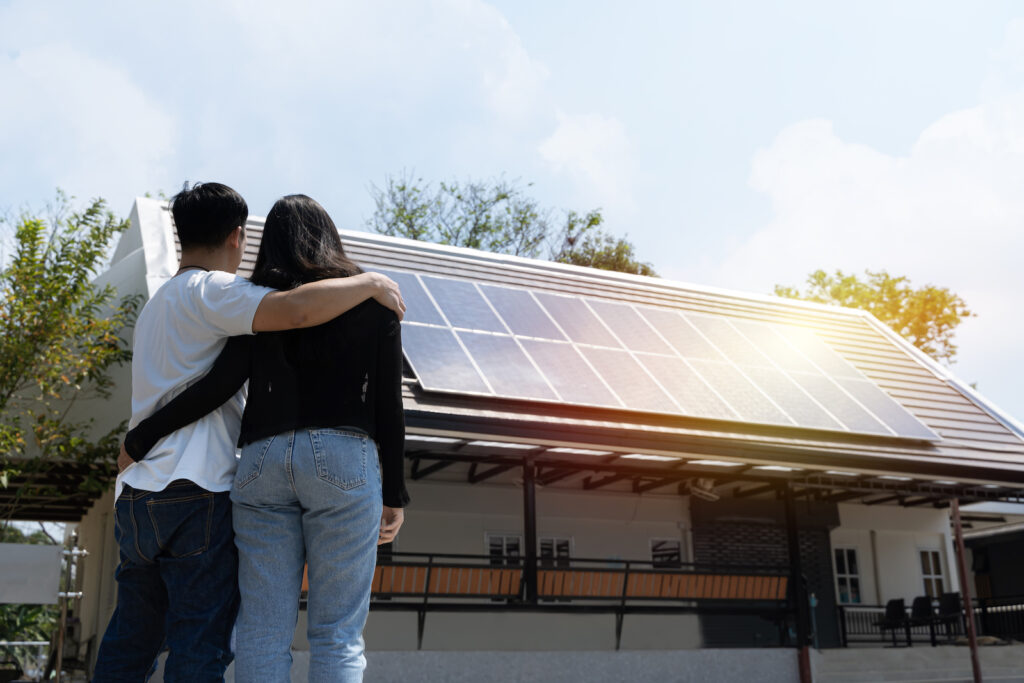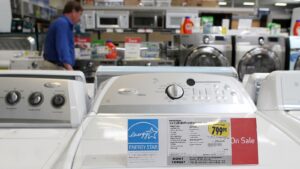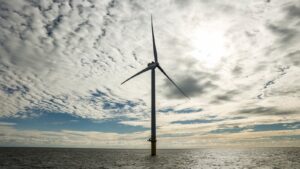When President Donald Trump signed the One Big Beautiful Bill Act on July 4, he was in many ways delivering on a campaign promise: gutting the country’s signature climate law, the Inflation Reduction Act, or IRA.
The new budget law delivers deep cuts for programs like renewable energy, tree-planting, and electric vehicle charging infrastructure. It also includes boons for oil drilling and exploration, and increases demand for timber from national forests. White House Assistant Press Secretary Taylor Rogers told Grist that its policies will “turbocharge energy production” and “deliver further relief to American families and businesses.”
But one month since its signing, the Republican megabill seems to be doing the opposite. Program administrators, energy experts, and tribal leaders across the country said there is chaos and confusion as they wait to hear the fate of IRA-funded programs worth billions of dollars.
Grist reports from four locations on how local groups are wading through the cuts and uncertainty.
Appalachia
In the days and weeks following Hurricane Helene last September, most communities across western North Carolina sat in a complete electrical blackout. Sundance Power Systems, a small solar company in the town of Weaverville, partnered with the energy nonprofit Footprint Project to restore power by deploying dozens of microgrids.
“We loaded solar panels and batteries up in the back of our ’97 Chevy, and we went around and started providing power to people who didn’t have it,” said Dave Hollister, CEO of Sundance Power Systems.
Hollister and colleagues at other clean energy companies soon noticed a trend: Areas with solar panels installed before the storm seemed to fare well in Helene’s aftermath, leading them to wonder whether the systems could not only help restore power to impacted communities, but also prepare the region for its next storm.
The IRA clean energy tax credits that made solar panels, geothermal heat pumps, and other renewable energy home modifications financially accessible are now being rolled back due to the Republican budget bill.
“Tax credits were part of the business model here in North Carolina,” Hollister said. “It’s been an important part of giving folks the ability to choose renewable energy as their preferred energy source.”
Admittedly, the IRA tax credits often disproportionately benefitted wealthy families, for whom the write-off made a bigger difference simply because their taxes were bigger to begin with. But there were additional provisions like the “direct pay” tax credit system that allowed nonprofits and governments to take on costs of clean energy installation at the community level, further bolstering solar for lower- and middle-income families. Direct Pay has not been rolled back by the Trump administration as yet. Some entities, like Mountain BizWorks, a nonprofit lender in western North Carolina, can still take advantage of that to fund new clean energy projects — but they’re watching its status closely.
“It definitely adds a bit of urgency and would encourage folks, if they’ve been thinking about pursuing some of those projects, to act now,” said Eric Burton, BizWorks director of energy and climate lending. Commercial tax credits extend through 2027 rather than 2025, but it’s still a tight timeline.
Midwest
Two years ago, Doris Martin, a retired computer scientist, completely retooled her home on the South Side of Chicago. She ditched her oil furnace, water heater, washer, dryer, and stove in favor of energy-efficient electrical appliances that take advantage of growing wind and solar power, lower air pollution in the home, and reduce the carbon dioxide her personal footprint spews into the air.
These days, it’s not unusual for neighbors to ring her doorbell and ask about the heat pump standing in her backyard. They also want to know about her utility bills, which sometimes dip as low as $12.
“It’s like I always hit the lottery,” Martin said.
Martin’s great uncle built the home in 1957, and she and her daughter moved in about 20 years ago. The house had remained relatively unchanged — it even had the original doors. With help from Elevate, a Chicago-based nonprofit tackling utility affordability issues, Martin was able to transform her home into a model of energy efficiency. But the financial incentives that made her retrofit possible — federal tax credits — are now disappearing under the Republican-backed budget bill.
The loss comes just as Chicago and the Midwest were beginning to emerge as national leaders in implementing the carbon-cutting technologies.
Midwestern homeowners were among the most active users of the now-expiring tax credits. In 2023, Wisconsin ranked sixth nationwide for the use of the home energy-efficiency tax credits available through the IRA. Michigan came in at ninth. States like Minnesota, Illinois, Iowa, Indiana, and Ohio all appeared in the top 20, according to data from the Internal Revenue Service.
Anne Evens, CEO of Elevate, warns that the cuts will have far-reaching impacts. Her organization helps retrofit about 50,000 homes a year in the Chicago area, relying on a mix of federal tax credits, utility programs, and philanthropic funding. Without the federal incentives, she expects fewer families will be able to afford the upgrades.
“It’s not only going to result in people having higher utility bills,” said Evans. “It’s also going to reduce the jobs that are created through all of this economic activity.”
While the federal tax credits are disappearing, Alex Amends, communications director at Rewiring America, stressed that other pathways to energy efficiency remain. His team is currently tracking approximately 4,000 active incentives across 29 states and is working on adding information for Ohio and North Carolina.
“Thankfully, thousands of programs at the state, local, and utility levels remain in place,” Amends said. “The opportunity is still here and momentum remains strong. People want the better option.”

Citizen of the Planet / Education Images / Universal Images Group via Getty Images
Southeast
For years, high upfront costs and tax credit structures made it difficult for all but the wealthiest Americans to install home solar. But the Biden-era IRA opened the door to a new kind of rooftop solar program that helped lower-income households tap into the technology and save on their energy bills. Nonprofits were able to claim tax credits as a direct payment from the government, then pass that money on as savings to homeowners who couldn’t otherwise afford rooftop systems. The financial services nonprofit Capital Good Fund coupled that opportunity with a $156 million Solar for All grant — another IRA provision — to fund a suite of low- or no-cost solar-lease programs in Georgia, known as Georgia Bright.
Those plans are now complicated by the One Big Beautiful Bill Act.
Georgia Bright is better off than some IRA-funded programs because its money was already committed last year. The Republican budget megabill only rolls back unobligated funds. “For now, everything is proceeding as normal,” said Alicia Brown, the director of Georgia Bright. “We are still submitting reimbursement requests and those are being honored.” (That is despite reports that the Environmental Protection Agency is planning to terminate Solar for All grants. As of August 5, Georgia Bright’s funding was still legally obligated, Brown said.)
But Georgia Bright promises its clients energy savings of 20 percent to 70 percent that are made possible by the IRA’s clean energy tax credits structure. The One Big Beautiful Bill Act will now restrict tax credits from going to what it calls a “foreign entity of concern,” defined as “own[ing] in aggregate 40 percent” of a project. There are ongoing efforts to shift solar panel manufacturing to the U.S., but progress is slow and many components still come from overseas. Organizations like Georgia Bright are still waiting for guidance from the Treasury Department on how exactly that threshold will be calculated, Brown said.
“Is it just major components? Are we also talking, like, bolts and screws and encapsulants and small things like that?” she said. “If we claim a tax credit we’re not eligible for — I mean, as a nonprofit it could put us out of business.”
The organization is moving ahead with its programs, including launching a drawing for no-cost solar installations in August, Brown said, while also “considering ways to be nimble.” That could mean reducing the number of households enrolled in Georgia Bright, or finding other ways to make up the savings.
“We’re going to keep focusing on doing the work,” said Brown. “Honestly, that’s the best thing you can do to justify a program — show that it’s doing good work for everyone in every congressional district.”
Great Lakes
Among his many roles, Robert Blake, a tribal citizen of the Red Lake Nation in Minnesota, is the executive director of the nonprofit Native Sun Community Power Development. He also owns Solar Bear, a solar-installation company based in Minneapolis. Solar Bear has built four solar projects in the Red Lake Nation, which Blake said bolstered local green energy capacity and provided job and technical training for community members. He sees this kind of work as central to Red Lake’s energy sovereignty — making power more affordable for tribal members and reducing reliance on the broader grid.
Blake had hoped that Department of Energy loan initiatives — such as the Tribal Energy Finance Program, also called the Tribal Energy Loan Guarantee Program — would help them finance additional projects. The IRA expanded the tribal finance program’s credit subsidies and loan guarantees, allowing for more funding for energy projects in Indian Country. The law increased the credit subsidy to $75 million through September 2028, and increased the program’s loan authority from $2 billion to $20 billion. But the Big Beautiful Bill Act eliminates nearly all of these funds.
“For small players like myself, and for tribal communities that are traditionally underserved or [under]invested in, this really makes it just that much more difficult,” Blake said.
The recent cuts were merely the latest setback for a program that has struggled to gain momentum, according to Jen Lerch, a senior advisor of the program until April who has worked in tribal finance for decades. The loan program office is critical to developing energy infrastructure, Lerch said, but there’s a fundamental misunderstanding of tribes and tribal finance. “Tribes are public bodies. They are likened to states in the eyes of the law, and certainly should be in the credit market,” she said. “So to approach tribal infrastructure energy financing as though it is, let’s say, Tesla or Rivian, is a grave error.”
Tribes in other parts of the Great Lakes have also seen direct impacts from the legislation. In northern Michigan, Interlochen Public Radio reported that the budget law rescinded $20 million from the Grand Traverse Band of Ottawa and Chippewa Indians, an environmental nonprofit, and local conservancies. This was under the U.S. Department of Agriculture’s Regional Conservation Partnership Program. The groups had already spent $450,000 on work to preserve agricultural land and restore streams and rivers — money they will no longer get reimbursed for from the federal government. While the Republican megabill rescinded IRA funds injected into the program, it actually increased its yearly appropriation overall, and the groups will likely apply again. The tribe is also appealing to get back the originally promised funding. Unless that happens, however, they remain in the red.
The Department of Energy didn’t provide comment for this story.
How to take advantage of energy efficiency incentives while you still can
The clean energy tax credit covers up to 30 percent of costs for installing new clean energy infrastructure in your home — but time is running out. Experts say you can still take advantage of the clean energy tax credit, as well as the energy-efficiency home improvement credit, with pretty much any contractor until December 31, 2025 (compared to a gradual phaseout beginning in 2033, originally set in the Inflation Reduction Act). That means expenses you rack up on clean energy and energy efficiency are still eligible until the end of the year. But it’s best to get to it fast — contractors are getting booked quickly.
This story was originally published by Grist with the headline Energy projects across the country are in limbo after Trump’s ‘One Big Beautiful Bill’ on Aug 8, 2025.


































